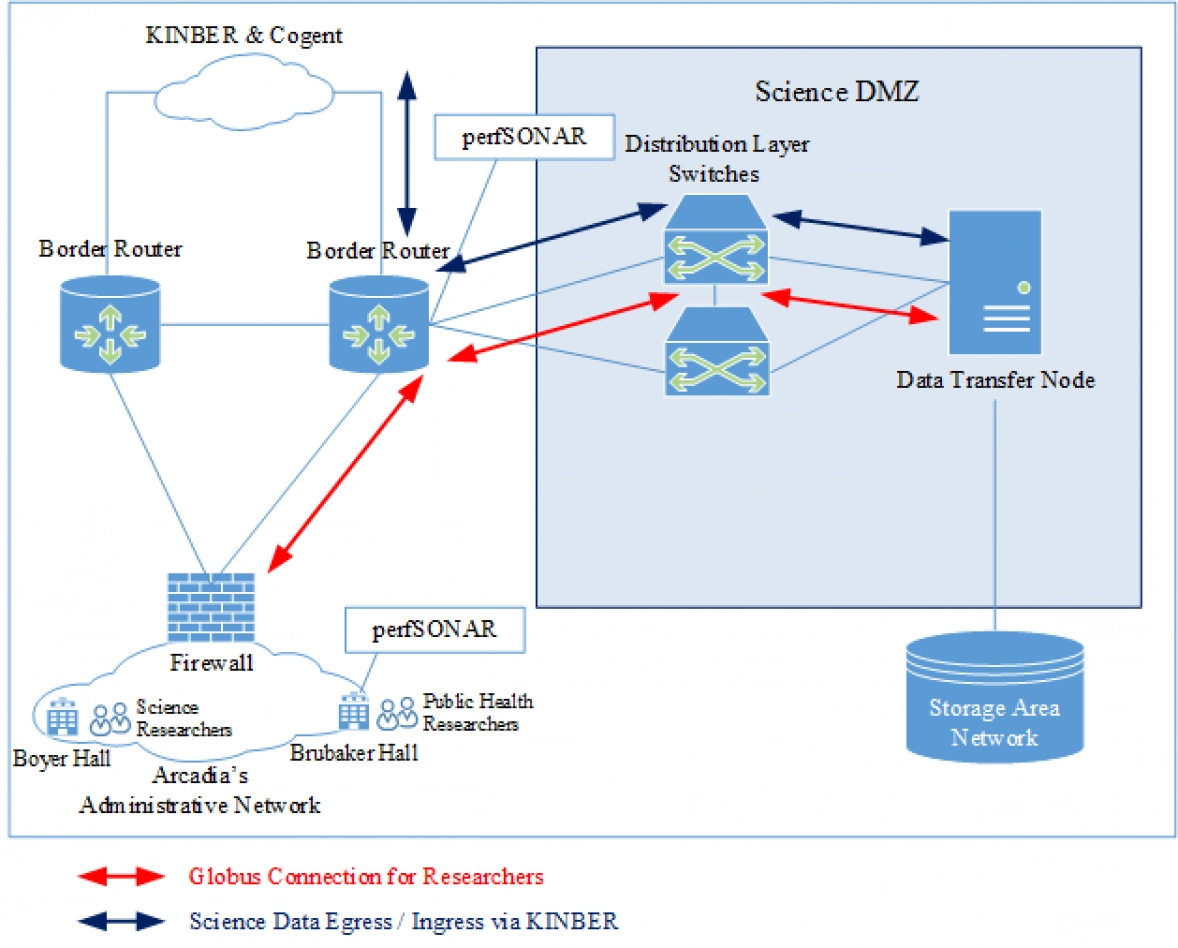NSF CC* Cyberinfrastructure Grant to Advance Arcadia’s Research Network, Innovation, and Collaboration

In 2018, the National Science Foundation awarded a $352,500 grant to enhance the capabilities of Arcadia’s infrastructure to grow research leaders in a technology-driven world. This project provides high performance, secure Science DMZ network for large dataset sharing and cloud-based education. It eliminates the technical barriers for faculty through a dedicated, friction-free path to the Internet2, PennREN, and other high-performance computing and data resources via KINBER‘s network.
What does it provide to students, faculty, and staff?
- A dedicated, friction-free (meaning that it has high throughput for quick data transfer) science network for transferring big data and sharing Arcadia-generated data with collaborators and the research community.
- The network is supported by a collaboration between Arcadia’s IT and the computer science faculty (Vitaly Ford), building a bridge for researchers on campus to quickly onboard.
- We have a Data Transfer Node (DTN) server that currently has Globus software installed for data transfer, sharing, and storage. Arcadia community can create a free GlobusID on https://www.globusid.org and contact Vitaly Ford to get started. Globus Connect Personal can be installed on computers/laptops and data can be directly transferred from there. If other discipline-specific software is needed to collaborate and share data with others, it could be installed as well.
- We have a dedicated KINBER connection to the Internet2 and PennREN networks as well as an educational agreement with AWS allowing Arcadia researchers to easily run experiments in the enterprise cloud, Jetstream, XSEDE, Chameleon Cloud, CloudLab, GENI, Emulab, etc., and store the data back on the DTN server.
I came here from another school, and we are just starting NSF CC* work, what resources should I look into?
Check out this NSF CC* workshop from April 2021 – Cyberinfrastructure Workshop on Enabling data movement for research and instruction. It covers “tools and techniques for data movement using cyberinfrastructure (CI) design, implementation of high-throughput networks and monitoring of the network, throughput, and performance to ensure traffic is flowing at it should, Science DMZs and how to partner with researchers, instructors, and students.” – a quote from the organizers of the workshop.

